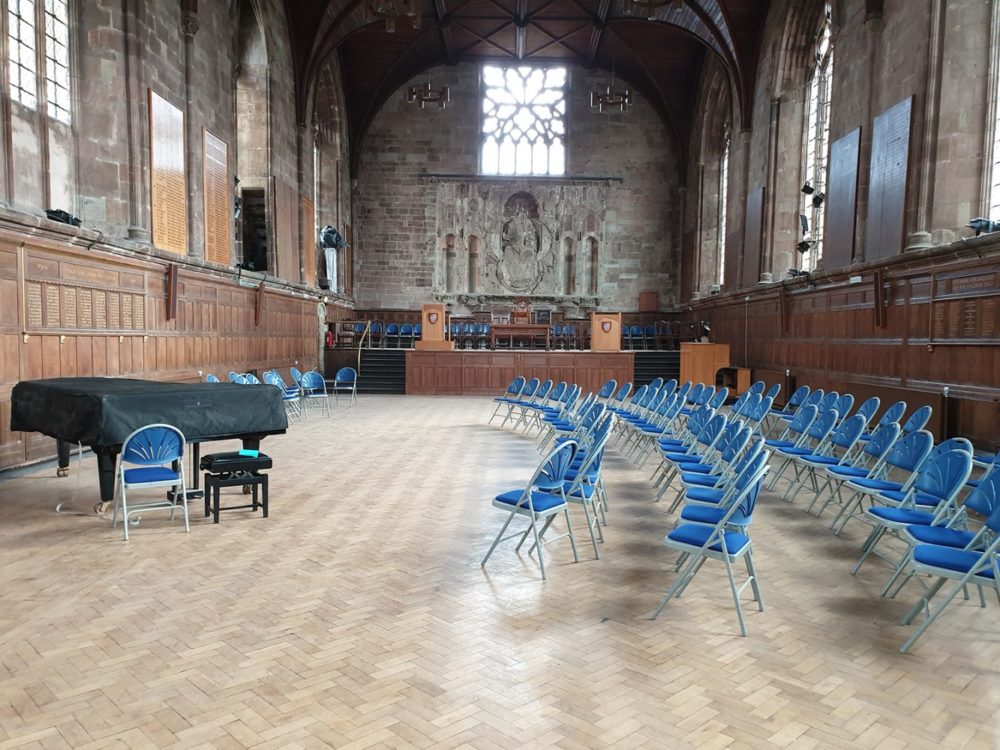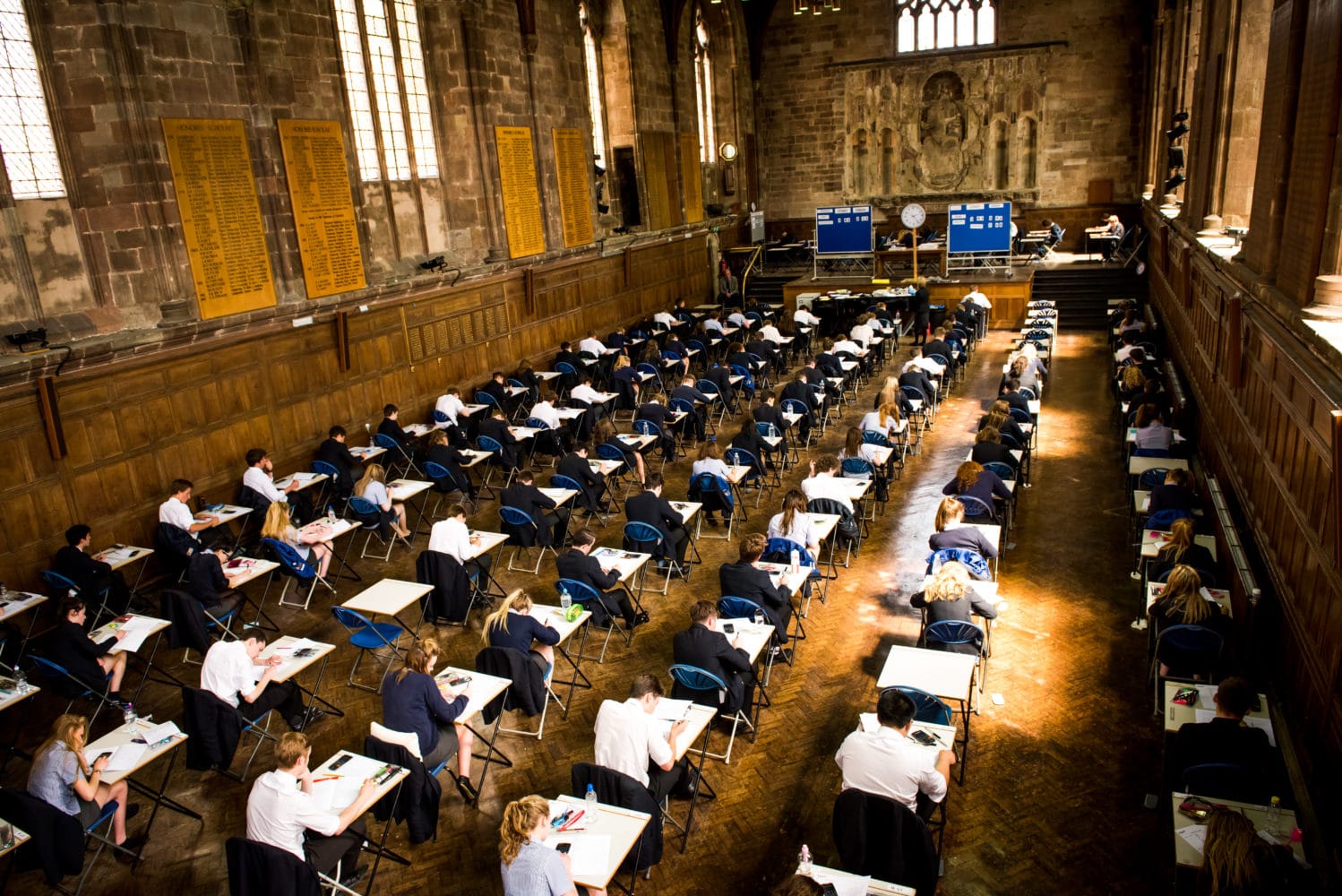OV
11 February
College Hall then and now

College Hall was a ‘Scheduled Ancient Monument’ built in 1076 and 1099 and is now the largest remaining monastic refectory in England after Westminster Hall, internally measuring 124ft in length. It was built on the instructions of Bishop Wulstan as the monk’s refectory to replace Bishop Oswald’s earlier, smaller church. The School has used College Hall for a variety of uses since the 1540s when the School was re-founded by Henry VIII. In 1651 the School’s use of College Hall was interrupted during the Battle of Worcester when the building was used as an infirmary for injured Scots troops who had been defending the ‘Faithful City’ for Charles II.
College Hall has been a pivotal location for King’s, witnessing numerous key events and occasions throughout its long history. In the 1870s the Hall was used to educate the School’s 200 pupils. The space was split into four sections, with an art class on the stage and the headmaster at the time (Mr Maurice Day and later, Mr William Bolland) would hammer with his mallet when the noise became too great. In the 1920s, in the absence of a gymnasium, College Hall was used as the setting for the House Boxing Cup and the P.T. Competition. During 1939 – 1940 the School was evacuated and commandeered by the Government and College Hall was set up as a Communications centre for the Air Ministry. In the event of a Nazi invasion, it is a little-known fact that the Government would have been moved to rural Worcestershire with the Prime Minister being housed at Spetchley and the Royal Family at Madresfield Court.
You may remember the striking figure of ‘Christ in Majesty’ sculpted in stone on the eastern wall of College Hall (behind the stage). Dating back to 1140, Christ in Majesty is seated on his throne with one hand raised in blessing and the other hand holding a book. The figure of Christ was surrounded by images of the four Gospel writers – Matthew, Mark, Luke and John – depicted as a Winged Man, a Winged Lion, a Winged Calf and a Winged Eagle. During the reign of Edward VI, significant damage was caused to the sculpture, where the statue of Christ was defaced and the smaller statues removed. In 1872 the remains of the Majestas were discovered during work carried out to replace the stage.
College Hall now, during 2021, under Covid-19 restrictions no longer has its ‘normal uses’ and is currently being used as a School Covid testing centre. This allows all staff and senior school key worker children to have two lateral flow tests a week, helping create a safer environment in which to work. A huge well done and thank you to Will Bird (King’s School Boatman – in ‘normal times’) for organising and running this testing centre and to his team for all their amazing work.
Worcester Cathedral is now also being used as a testing centre for members of the public without symptoms. Both these historic buildings currently have very different uses to their regular every day, but it is a wonderful celebration of their positions at the heart of the Worcester community.

 Back
Back




